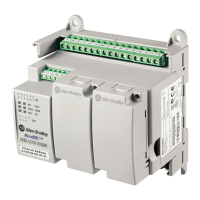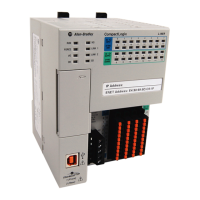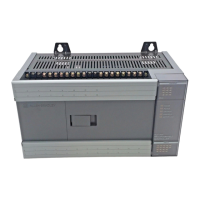662 Rockwell Automation Publication 1756-RM003N-EN-P - October 2011
Appendix B Function Block Attributes
Time-based instructions require a constant value for DeltaT in order for the
control algorithm to properly calculate the process output. If DeltaT varies, a
discontinuity occurs in the process output. The severity of the discontinuity
depends on the instruction and range over which DeltaT varies.
A discontinuity occurs if the following happens:
· Instruction is not executed during a scan.
· Instruction is executed multiple times during a task.
· Task is running and the task scan rate or the sample time of the process
input changes.
· User changes the time-base mode while the task is running.
· Order parameter is changed on a filter block while the task is running.
Changing the Order parameter selects a different control algorithm within
the instruction.
Common Instruction Parameters for Timing Modes
The instructions that support time-base modes have these input and output
parameters.
Oversample In oversample mode, the delta time (DeltaT) used by the instruction is the value written into the OversampleDT parameter
of the instruction. If the process input has a time stamp value, use the real time sampling mode instead.
Add logic to your program to control when the instruction executes. For example, you can use a timer set to the
OversampleDeltaT value to control the execution by using the EnableIn input of the instruction.
The process input needs to be sampled 5-10 times faster than the instruction is executed in order to minimize the sampling
error between the input and the instruction.
Real time sampling In the real time sampling mode, the delta time (DeltaT) used by the instruction is the difference between two time stamp
values that correspond to the updates of the process input. Use this mode when the process input has a time stamp
associated with its updates and you need precise coordination.
The time stamp value is read from the tag name entered for the RTSTimeStamp parameter of the instruction. Normally this
tag name is a parameter on the input module associated with the process input.
The instruction compares the configured RTSTime value (expected update period) against the calculated DeltaT to
determine if every update of the process input is being read by the instruction. If DeltaT is not within 1 millisecond of the
configuration time, the instruction sets the RTSMissed status bit to indicate that a problem exists reading updates for the
input on the module.
Timing Mode Description

